Kalabaka
The city of Kalabaka
Kalabaka is a city in the Prefecture of Trikala and the capital of the Municipality of the same name. It is located in central Greece and extends to the northwestern part of the Thessaly plain. It is built next to the rare geological phenomenon of Meteora, while the Pinios River passes near it. It was inhabited since ancient times under the name Aeginio.
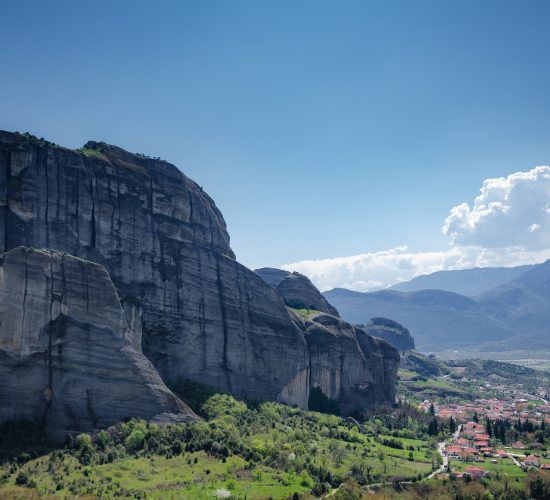
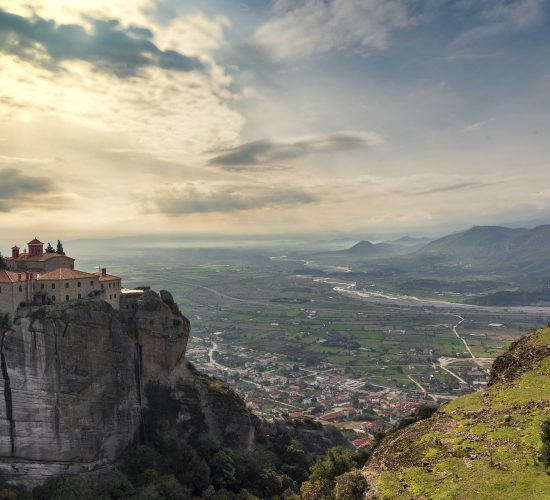
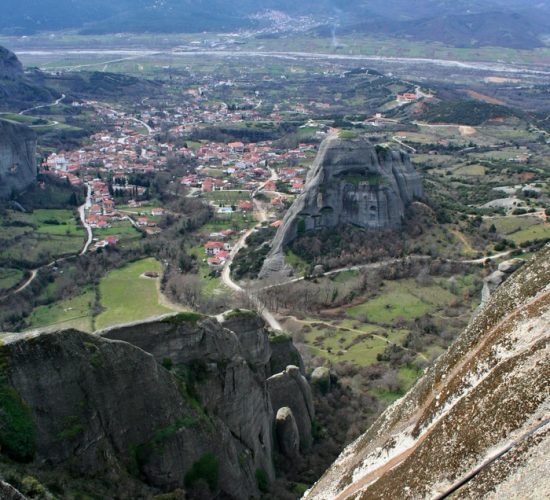
A look at the history of Kalabaka
The city’s long history begins almost 3000 years ago, as there are many who place the Homeric city of Ithomi on the site of present-day Kalabaka. Homer in the Iliad describes how the city was built on rough, rocky ground or piles of stones (epithet: klomakoessan) and took part in the Trojan War with King Podaleirius “The d’ eichon Trikki and Ithomien klomakoessan” (Il. B’ 729) sending a total of 30 ships with the 2 other neighboring cities Trikki and Oichalia.
In 1995, an ancient tomb was discovered in Kalabaka, dating back to approximately 2,000 BC. A Greek inscription on the wall of one of the oldest churches in the city (St. John the Baptist) testifies to the existence of an ancient Greek settlement named Aeginion.
The city was built on the site of the ancient city of Aegini. In the 10th century AD it was known as Stagoi, a Byzantine fortress and bishopric. Of its medieval monuments, only the Church of the Assumption of the Virgin Mary survives. It was a building of the late 11th or early 12th century, built on the remains of an older church of late antiquity. Remains of an ancient Greek temple – possibly of the god Apollo – have been incorporated into the wall of the oldest and best-known church of the city, dedicated to the Virgin Mary.
Stagi is first mentioned in the work Diatuposis of the Byzantine Emperor Leo VI the Wise (886-812). In 1163 there was a reference to the castle of Stagi. In 1204 Stagi passed into the Despotate of Epirus. At the end of the 13th century it passed into the Duchy of New Patras. In 1334 it was reoccupied by the Despot of Epirus John II Orsini and then briefly came under the control of the Byzantine Empire. In 1348 it was occupied by the Serbs of Stephen Dusan. It came under the reign of his brother, King Symeon Oures. When the Turks occupied Thessaly, Kalabaka was placed under the administration of the Pasha of Larissa and later the Sanjak of Trikala.
The Swedish traveler J. Björnstöll (1779) writes that in Stagi there were 10 Christian churches and no mosque, and also that outside the metropolis there were various ancient and modern inscriptions. During the Ottoman occupation it was an important commercial center. Cotton and silk of excellent quality were cultivated and traded in the area.
Kalabaka had close ties with the armatolikia of Hassia and Pindos and was often attacked by the Turk-Albanians, mainly in the late 18th and early 19th centuries. In the Thessalian uprising of 1854, it was occupied by the Greeks, under Christodoulos Hadjipetro and Petropoulakis. On 1-10 May 1854, a deadly battle took place in Kalabaka, during which approximately 500 Turks were killed. The city was finally liberated on 27 August 1881.
Kalabaka was completely burned by German troops on October 18, 1943. During the Occupation, it was under the control of the Resistance for long periods.
The beautiful city of Kalabaka today has over 12,000 residents and is one of the most popular tourist destinations in the country with over 2.5 million tourists visiting it annually.
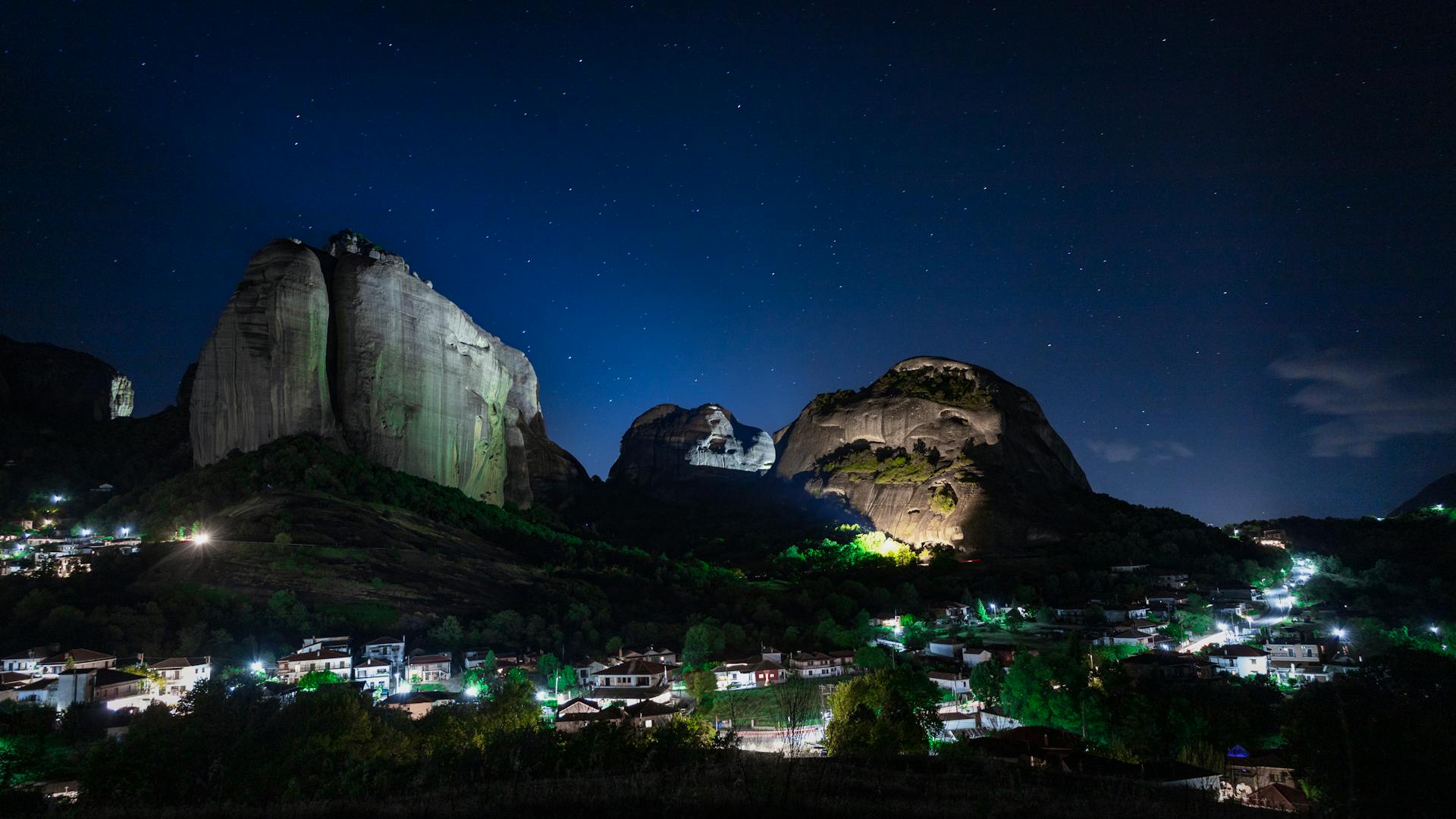
Worth a try and a visit
Although the city itself is often in the shadow of Meteora and the monasteries and may seem underrated, it is nevertheless a small revelation for every visitor with many interesting monuments, dozens of hotels, taverns, restaurants, cafe, bars, and a developed market.
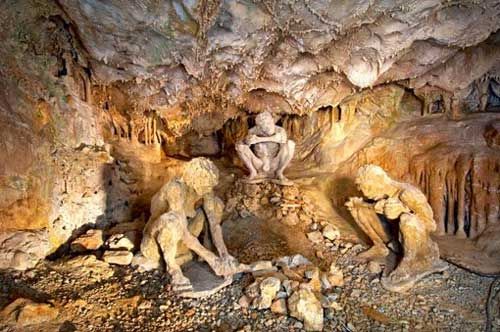
Theopetra Cave
The archaeological site of Theopetra Cave is one of the most interesting archaeological sites in the country. The prehistoric cave was first inhabited by humans almost 130,000 years ago in the Paleolithic era. The global uniqueness of this cave lies in the fact that it contains rich and unique findings about two of the most important cultural changes in human prehistory: the replacement of Neanderthals by modern humans and the transition from hunter-gatherer humans to the agricultural revolution.
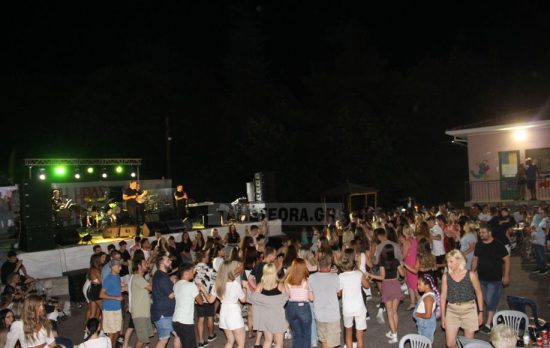
Wine festival
In the last ten days of August, in Kastraki, the Kastraki Beautification Cultural Club organizes the Wine Festival every year.
The celebration is one of the most important summer events in the region and features well-known artists as well as the club’s dance groups.
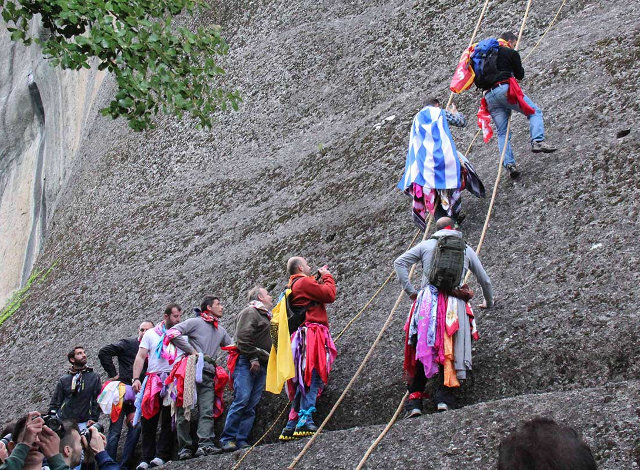
Custom of St. George the Mantila
Every year on the feast day of Saint George, the custom of handkerchiefs is revived in Kastraki.
The custom of handkerchiefs is said to date back to the era of Turkish rule. During the divine service, young people, girded with hundreds of handkerchiefs – votive offerings of the faithful, climb the steep rock with the help of ropes. Their purpose is to hang the new handkerchiefs – votive offerings and take the previous year’s ones, which they distribute as amulets to the pilgrims upon descending.
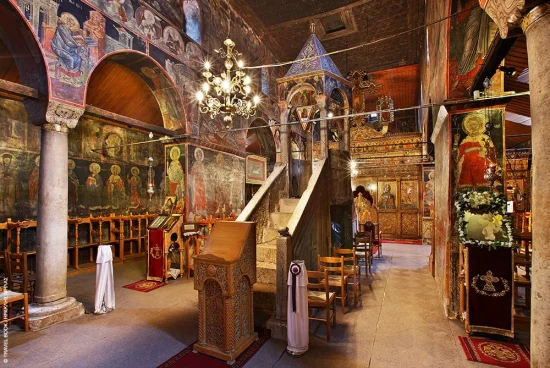
Church of the Assumption of the Virgin Mary
The Byzantine church is the most important and imposing monument in the northern part of Kalabaka, which is a point of reference and worship for all believers. The frescoes of the church date from the 12th to the 16th century and are of exceptional interest.
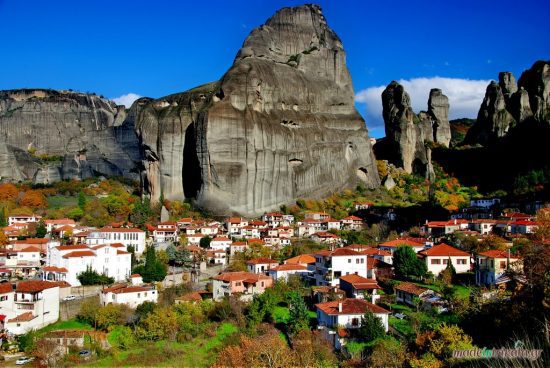
Kastraki & old town
At a distance of 2 km, the village of Kastraki joins Kalabaka under the shadow of the imposing monolithic rocks of Meteora.
Don’t forget to walk through the old, picturesque district of the city, with its narrow cobblestone streets and traditional houses, some of them built right next to the rocks!

Local foods
Homemade sausages and local meats, cheese and yogurt rank at the top of a large list of gastronomic domestic products. Don’t leave here without trying a variety of homemade pies – the local specialty! Find the dishes of your preference at the Polyzos restaurant just below the hotel and the center of Kalambaka at the Sirtaki restaurant and at the all day bar restaurant Feel The Rocks.

